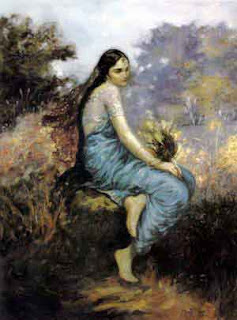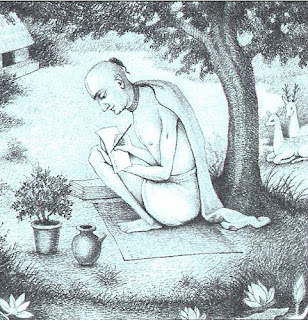The Structure of Dāna-keli-kaumudī

I have been writing about the folk and classical versions of the dāna-keli-līlā , in particular with reference to its classicization in the DKK. My point has been that the difference between the folk tradition and the classical is similar to most low-brow and high-brow culture. In one of my last posts , I gave the analogy of folk music to a symphony, or folk stories to an opera as being the kind of distinction that could be made. There will always be people who favor one or the other, but I think it can be said without too much exaggeration that the latter does require and expect a greater amount of education, or saṁskāra , on the part of the audience. This will, as we have been discussing in the comments on some articles on culture, always be a point of contention: how to popularize something while at the same time making its full power and richenss available; the whole question is one of throwing pearls before swine. I have been reading a couple of nice books that go into many of



